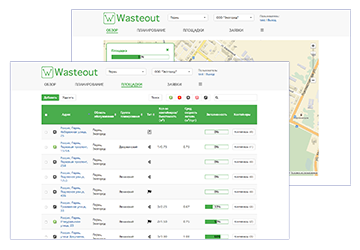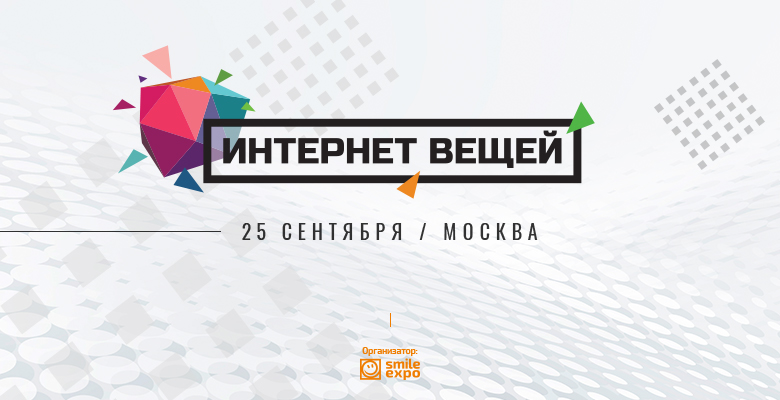Why should trash can access the Internet

If you take an exclusively household level, the Internet of things for most of us is a smart home, virtual assistants and smart appliances. Now imagine that in the morning you walk past the container site - and it is unusually clean, and so day after day.
Garbage containers with IoT-sensors are already in Moscow, St. Petersburg, Bryansk, Perm and Kaluga, and may soon appear in your yard. The waste carriers use Russian devices and software developed by Wasteout . We asked the co-founder of the company about how the system works and how much their product is in demand in the market. Under the cut - the main excerpts from our conversation.

')
Andrew Klyuev - CTO and co-founder of the company Wasteout . In the past, he was Head of Development and CEO of Helikon Pro. Candidate of Physical and Mathematical Sciences, Associate Professor at the Department of Mathematical Modeling of Systems and Processes at the Perm National Research Polytechnic University. A participant in the discussion on effective urban technologies at the Internet of Things conference.
How does the solid waste accumulation sensor work?
This device is installed in a regular trash can. Its body is waterproof and dustproof. The device corresponds to the class IP56. Inside the ultrasonic sensor, temperature sensors, tilt and radio module. We release several modifications: for GSM / GPRS and LoRaWAN. The device notes the moments of filling and emptying the container and transmits this information to the server of the Wasteout system. Designed for autonomous work for 5 years.
The Wasteout portal processes the instrumentation data and builds a picture of the accumulation of waste on the territory of the district, city, region, country in different analytical sections. After processing the data, you can get different information: the average rate of accumulation of waste, the variation of indicators, the rate of filling, taking into account the season and day of the week, the average time the container is in the filled state, the long-term accumulation trend and others.
There is also such a characteristic as “cleaning quality index”: the derivative value of the time when the container remains full. The waste carrier usually thinks that his work was well done if he went to the containers on a schedule. And for the townspeople, the quality of cleaning is the absence of overcrowded grounds, and hence the dirt, flying garbage and rats. Wasteout shows the quality of cleaning clearly. For example, if the container site is regularly filled for more than 12 hours, then it is clear that the carrier does not work well.
What tasks the system helps to solve and who will buy it?
 Wasteout created primarily for waste carriers. It is one of the few technologies in the field of waste management that pays off. With its help, you can build a "smart" logistics for the removal of waste and thereby save on fuel, service life, staff costs. The system is useful for both the regional waste management operator and the authorities.
Wasteout created primarily for waste carriers. It is one of the few technologies in the field of waste management that pays off. With its help, you can build a "smart" logistics for the removal of waste and thereby save on fuel, service life, staff costs. The system is useful for both the regional waste management operator and the authorities.I have already spoken about the quality of the cleaning; There is one more important parameter: control of sufficiency or redundancy of container stock. The regional operator pays for the carriers with the number of containers, so it is important for him to know if there are not too many containers installed on the site.
One more example. Garbage should be sent to landfills, sorting plants or incinerators. But for the sake of economy, waste transporters often dump them in the wrong places. Because of this, spontaneous unauthorized dumps are formed. According to the Ministry of Natural Resources of Russia, there are about 100 thousand illegal dumps in our country. And according to the statement of the Deputy Minister of Construction and Housing and Communal Services, Andrei Chibis, thanks to them, carriers receive up to 80% of revenues. With the help of Wasteout you can identify such carriers-violators. It is enough to compare how much garbage has accumulated in their containers and how much has been handed over for recycling.
Wasteout is critical for organizing separate collection of garbage or the collection of fabrics and clothing. Such containers are filled very unevenly, and the logistics of cleaning them is difficult. As a result, companies that process recycling work at a loss or with a minimum income. Our system can significantly improve profitability in this area.
Whose development were you focused on?
We started developing our device in 2016. Then there were already analogues. The product of the Finnish company Enevo * seemed to be the most interesting, but we set out to create an original device so as not to violate Enevo patents in Europe and the USA. We did it: we also use an ultrasonic sensor, but the measurement is different. This opens up prospects for us in the European and North American market.
* Enevo sensors are currently used in 35 countries
The main problems were the difficulty of measuring the distance inside the container (its volume is relatively small) and the inadequacy of GPRS. Until now, our system has a backup data channel based on SMS.
How did the first tests go?
We found a partner for the pilot quickly, but this was the “Spetsavtokom” in Bryansk - the location is not very convenient for us. The distance was one of the reasons why testing was delayed. But we found and cured most of the diseases of the device, testing it in different conditions (including winter), in different containers. The pilot project was successfully completed at the end of 2017.
Now we have valid contracts with six operators. Buy small batches of devices for carrying out pilot implementation. We take this calmly, because for the market it is a completely new product. The geography is wide enough: Moscow, St. Petersburg, Bryansk, Perm, Kaluga.
How is the device protected from vandals?
 The case of the device is made of special plastic: it withstands shocks and does not collapse even at temperatures of -40º C, and does not sustain combustion when the container burns. And before finally failing, the device reports a fire.
The case of the device is made of special plastic: it withstands shocks and does not collapse even at temperatures of -40º C, and does not sustain combustion when the container burns. And before finally failing, the device reports a fire.But the main problem is the theft of devices. Therefore, when developing, we laid down the principle of "zero value": even if the device is disassembled and try to sell it by component, the attacker will not be able to earn anything substantially. Even battery sizes do not allow it to be used in household appliances.
Waste transporters willing to invest in IoT technology?
Our product is well received in those companies where they know how to count - for example, calculate logistics costs. It has become a great discovery for us that some transport companies do not know exactly how much it costs to export one cubic meter of waste. Of course, such companies are not focused on reducing costs with IoT.
Another problem is the outdated regulations in force in the industry. Companies refer to the fact that they still need to come once a day to the container site, so the devices will not help much. It turns out that the state does not stimulate high-quality cleaning of waste, but mileage of garbage trucks.

In addition to Andriy Klyuev, the participants in the discussion on the effective urban technologies of the future will be representatives of the companies Light Technologies, STRIZH, RosKomSvoboda, etc.
See the full program of the Internet of Things conference on the official website .
Interview with the representative of "Light Technologies" on the introduction of smart lighting in Russian cities, read here .
Source: https://habr.com/ru/post/423535/
All Articles